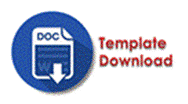Karakteristik Arang Kulit Durian Dan Daun Jenggelan Untuk Pembuatan Tinta Organik
Abstract
Printing inks contain dyes, adhesives, lubricants, plastics, surfactants and other substances. Chemical-based inks have carcinogenic, toxic, and corrosive properties that cause breathing difficulties and dizziness in humans when the substance is vaporized and inhaled, disorders of the brain, liver, and nervous system if inhaled for a long time. So an organic ink innovation is needed. This study aims (i) to determine whether durian peel charcoal and janggelan leaves can be used as a basic material for making organic ink. (ii) To determine the characteristics of organic ink made from durian skin and janggelan leaves. (iii) To determine the optimum composition of durian skin charcoal and janggelan leaves. The tests carried out are density, viscosity, surface tension and Fourier Transform Infrared (FTIR). The results obtained show that the organic ink that can be used is with a sample composition of 5 grams of durian skin charcoal, 1.5 grams of janggelan leaf extract, 96% alcohol 15 ml and distilled water 20 ml. With ink density value of 0.92 gr/cm3, viscosity value of 3.88 Cp, surface tension value of 45.802 dyne/cm. The functional groups of organic ink that have been studied are OH, CO, C=O, C ≅ C.
Keywords
Full Text:
PDFReferences
Anova, I. T. (2017). Pemanfaatan Gambir Sebagai Bahan Dasar Pembuatan Tinta Spidol Ramah Lingkungan. Jurnal Litbang Industri, Vol 7 , 101-109.
Assifa, F. W. (2020). Pengaruh Variasi Massa PEG dan Volume Alkohol pada Uji Viskositas dan Uji Organoleptik pada Tinta Organik dari Kulit Buah Naga. Jurnal ITEKS, Vol 12, 1-6.
Damanik, R M;. (2019). Pembuatan Dan Karakterisasi Tinta Organik Berbasis Hyrochar Dari Limbah Kulit Durian Yang Diperkut Oleh Getah Akasia. Medan: Universitas Sumatera Utara.
Hanum, F. &. (2017). Adsorbsi Zat Warna Metilen Biru Dengan Karbon Aktif Dari Kulit Durian Menggunakan KOH dan NAOH Sebagai Aktivator. Jurnal Teknik Kimia USU, Vol 6, 49-55.
Lumbantoruan, P. (2016). Pengaruh Suhu Terhadap Viskositas Minyak Pelumas (Oli). Jurnal Ilmiah Matematika dan Ilmu Pengetahuan Alam, Vol 13, 26-34.
Marlinawati, Y., & Alimuddin. (2015). Pemanfaatan Arang Aktif Dari Kulit Durian (Durio zibethinus I) Sebagai Adsorben Ion Logam Kadmium (II). Jurnal Kimia Mulawarman, Vol. 13, 23-27.
Medi, Y. &. (2022). Studi Potensi Tinta Printer Berbahan Dasar Pigmen Organik Dari Jambu Biji. 101-105.
Muchtar, H. (2015). Pengaruh Kecepatan Pengadukan Dan Kehalusan Gambir Serta Variasi Komposisi Terhadap Beberapa Sifat Fisika Dalam Pembuatan Tinta Cetak. Jurnal Litbang Industri, Vol 5, 131-139.
Nitsae, M. &. (2017). Uji Ketahanan Luntur dan Karakterisasi Serbuk Tinta Cumi-Cumi (Loligo sp.) Sebagai Dasar Pewarna Hitam untuk Kain Tenun Ikat Asal Nusa Tenggara Timur. Jurnal Ilmiah Ilmu-Ilmu Hayati, Vol 2, 89-96.
Rahayu, T. F. (2021). Pengaruh Variasi Konsentrasi Tempurung Kelapa Terhadap Karakteristik Tinta Spidol Whiteboar Ramah Lingkungan. Jurnal Kartika Ilmiah, Vol 4, 77-82.
Rengganis, A. P. (2017). Pengaruh Variasi Konsentrasi Arang Ampas Kopi Terhadap Sifat Fisika Tinta Spidol Whiteboard. Jurnal MIPA, 92-96.
Salam, R. (2017). Uji Kerapatan, Viskositas Dan Tegangan Permukaan Pada Tinta Print Dengan Bahan Dasar Arang Sabut Kelapa. Makassar: Universitas Islam Negeri Alauddin Makassar.
Sulaiman, N. (2022). Pemanfaatan Daun Bayam Merah Tipe Varietas Red Leaf Sebagai Bahan Baku Pada Pembuatan Tinta Stempel Berbahan Alami. Jurnal Litbang Industri, Vol 12, 27-32.
Wiguna, P. A. (2015). Pembuatan Tinta Printer Dengan Pigmen Organik Berbahan Dasar Sampah Daun. Jurnal Sainteknol, Vol 13 No. 2, 14-150.
Yani, A. F. (2023). Pemanfaatan Karbon Aktif Tempurung Kelapa Sebagai Carbon Black Tinta Serbuk. Jurnal Fisika Online,Vol 8, 90-95.
DOI: https://doi.org/10.30596/rmme.v7i2.18962
Refbacks
- There are currently no refbacks.

This work is licensed under a Creative Commons Attribution 3.0 License
Jurnal Rekayasa Material, Manufaktur dan Energi is abstracting & indexing in the following databases:
This work is licensed under a Creative Commons Attribution-ShareAlike 4.0 International License.
Statcounter View My Stats RMME
















